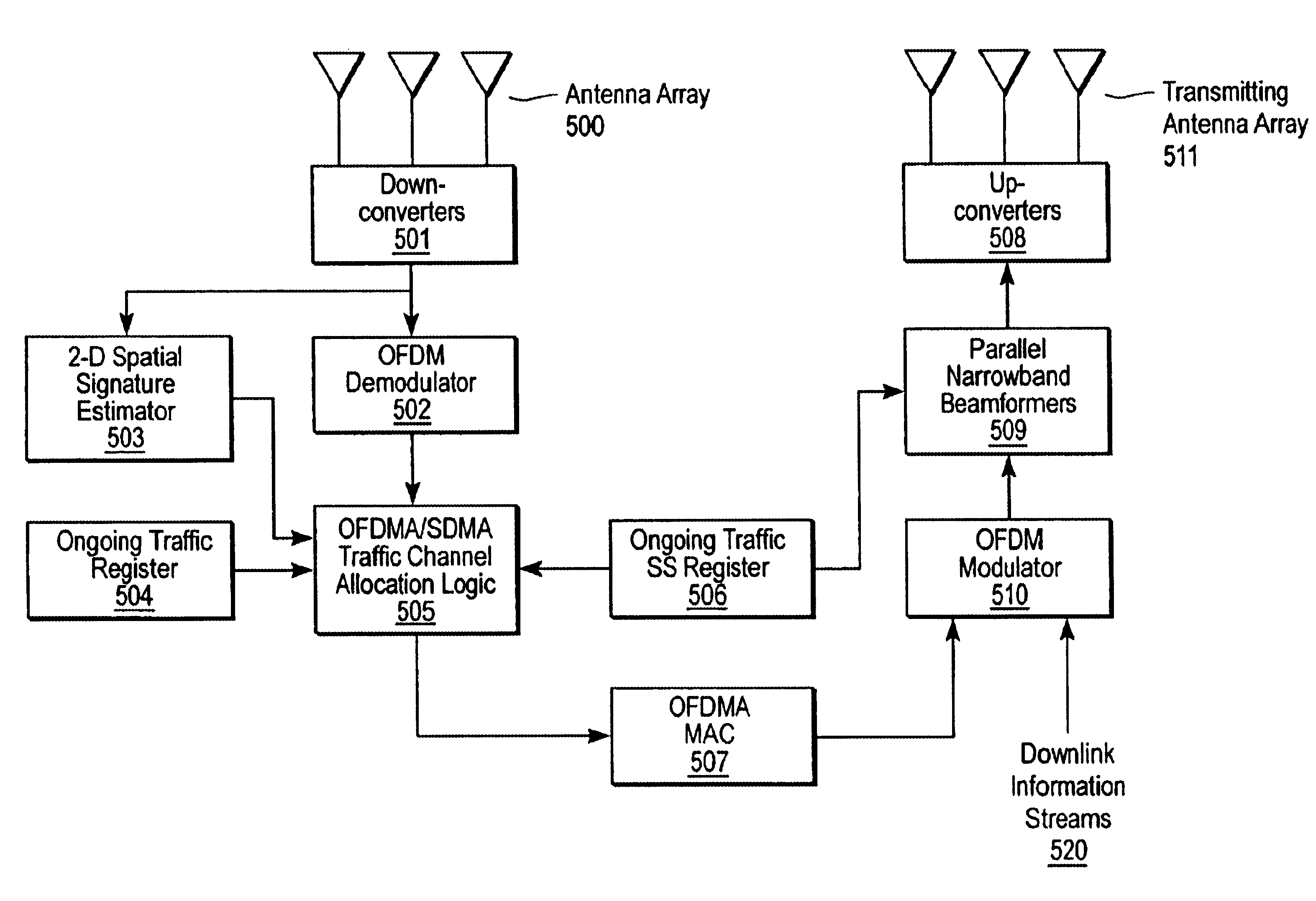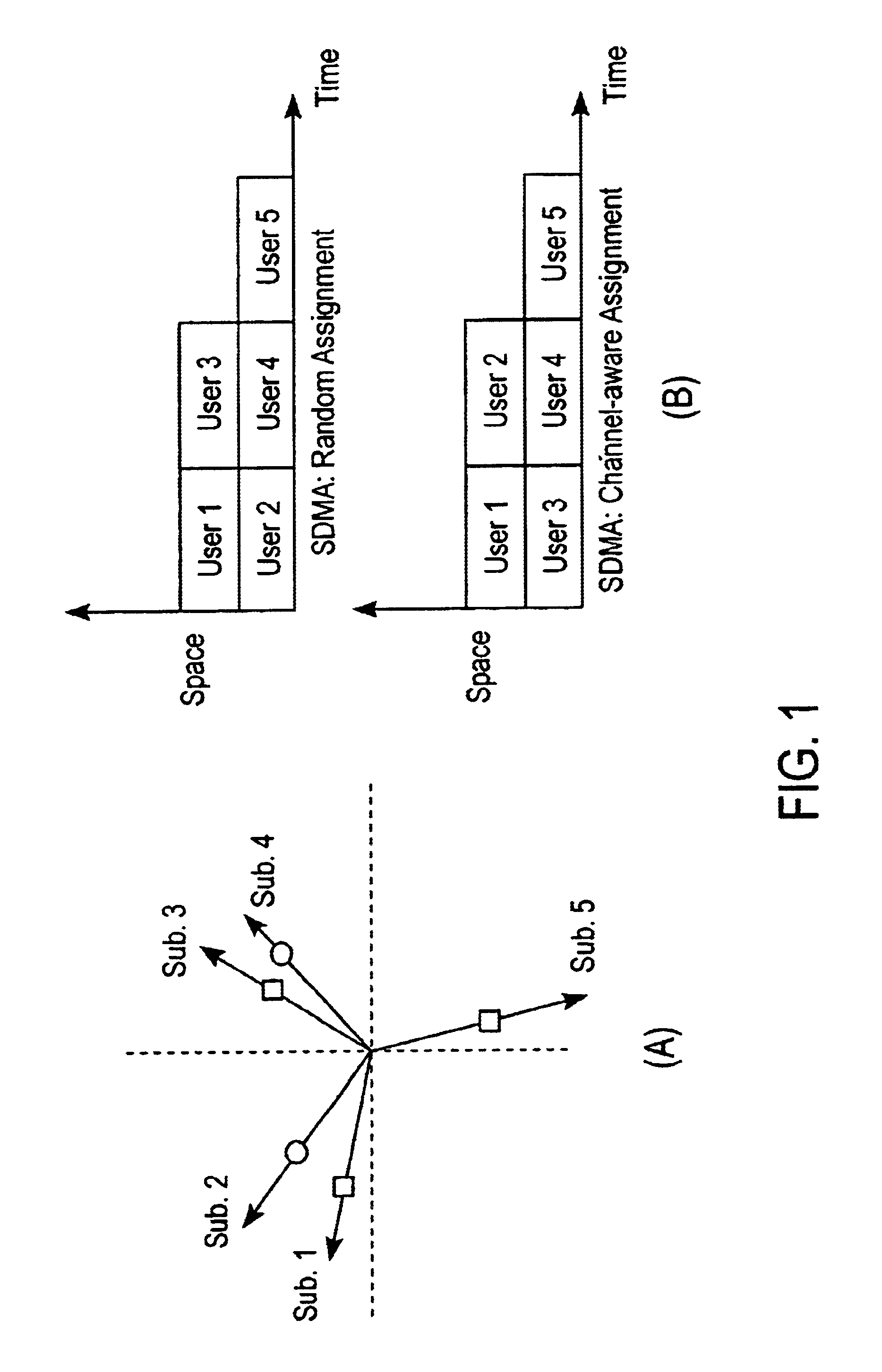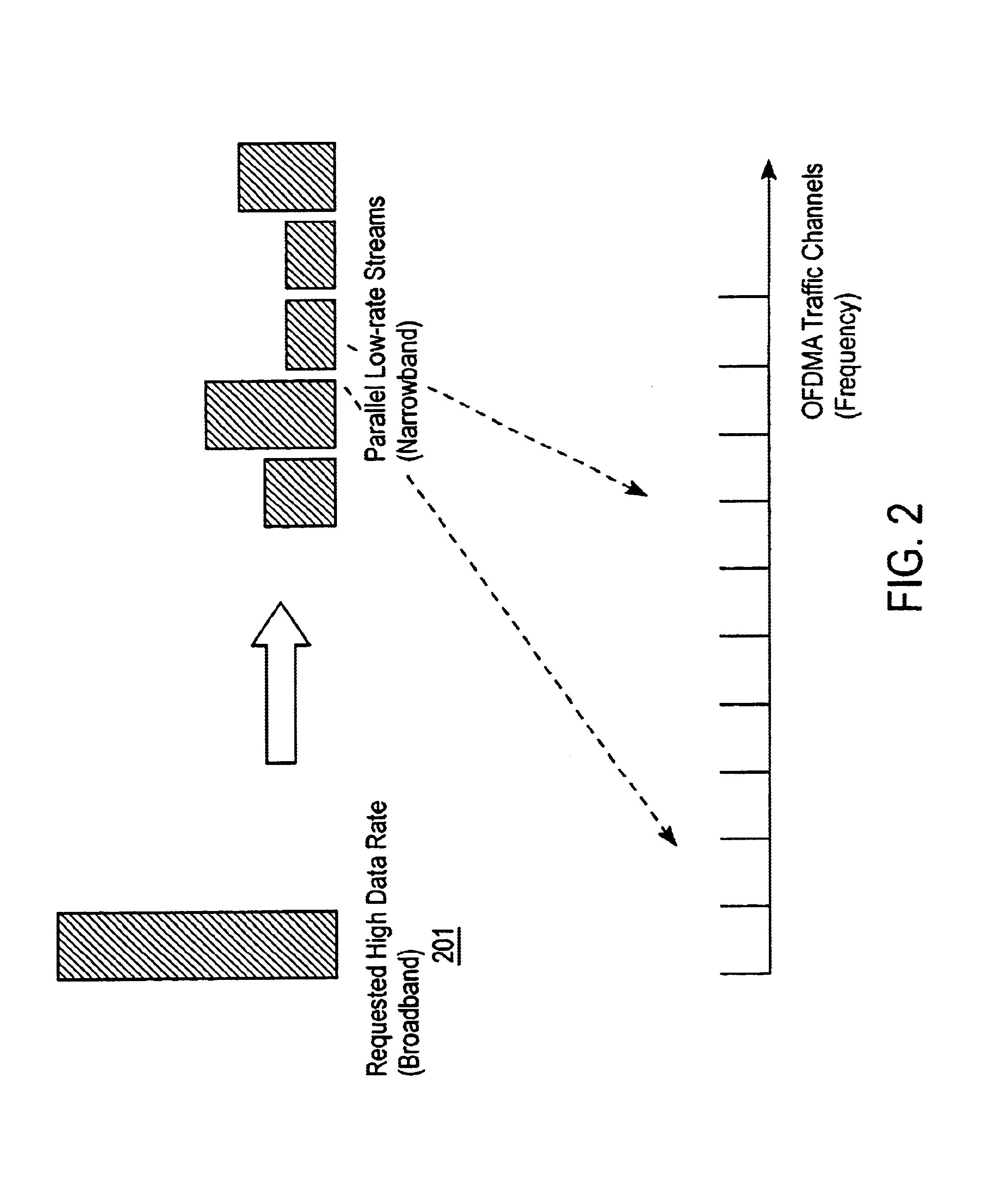Channel allocation in broadband orthogonal frequency-division multiple-access/space-division multiple-access networks
a technology of orthogonal frequency-division multiple access and channel allocation, applied in the field of communication systems, can solve the problems of unfavorable spatial configuration, rare orthogonal spatial channel in practice, and mutual interfering traffic over sdma channels
- Summary
- Abstract
- Description
- Claims
- Application Information
AI Technical Summary
Problems solved by technology
Method used
Image
Examples
Embodiment Construction
A network described herein combines orthogonal frequency-division multiple-access (OFDMA) with space-division multiple-access (SDMA) to provide an OFDMA / SDMA protocol that offers an increase in capacity, while assigning OFDMA / SDMA traffic channels to multiple-access subscribers based on their broadband (two-dimensional) channel characteristics. In one embodiment, such a network is a cellular network implementing OFDMA in conjunction with spatial multiplexing in a broadband wireless cellular network. The cellular network includes a base-station with spatially separated transceivers and multiple subscribers communicating with the base-station using an OFDMA protocol. The term “subscriber” or “subscribers” is used herein to refer to a subscriber unit or device.
The network includes traffic channel allocation logic that increases, and potentially maximizes, the network throughput based on the broadband propagation characteristics between the base-station and the subscribers. In one embod...
PUM
 Login to View More
Login to View More Abstract
Description
Claims
Application Information
 Login to View More
Login to View More - R&D
- Intellectual Property
- Life Sciences
- Materials
- Tech Scout
- Unparalleled Data Quality
- Higher Quality Content
- 60% Fewer Hallucinations
Browse by: Latest US Patents, China's latest patents, Technical Efficacy Thesaurus, Application Domain, Technology Topic, Popular Technical Reports.
© 2025 PatSnap. All rights reserved.Legal|Privacy policy|Modern Slavery Act Transparency Statement|Sitemap|About US| Contact US: help@patsnap.com



